
A new mechanism has been discovered that enables bacteria to take up nutrients from their human host and bypass antibiotic treatment. This new form of antimicrobial resistance is undetectable using traditional laboratory testing methods.
Australian scientists have uncovered a new form of antimicrobial resistance – undetectable using traditional laboratory testing methods – in a discovery set to challenge efforts to tackle one of the world’s greatest health threats.
Antimicrobial resistance (AMR) is expected to claim 10 million lives a year by 2050, with researchers racing to understand and get ahead of the diminishing benefits of antibiotics.
Now, scientists have unearthed a critical clue to the way some bacteria are managing to dodge antibiotics – a finding expected to be the tip of the iceberg. The research team was led by Dr. Timothy Barnett, Head of the Strep A Pathogenesis and Diagnostics team at the Wesfarmers Centre of Vaccines and Infectious Diseases, based at Telethon Kids Institute in Perth, Western Australia.
In research published today (November 30) in the journal Nature Communications, the team revealed a new mechanism that enables bacteria to take up nutrients from their human host and bypass antibiotic treatment. The researchers made the discovery while investigating antibiotic susceptibility of Group A Streptococcus – a potentially deadly bacteria often found in the throat and on the skin that can cause many different infections.
Antimicrobial / antibiotic resistance happens when germs like bacteria and fungi develop the ability to defeat the drugs designed to kill them. That means the germs are not killed by the medicine and continue to grow. Resistant infections can be difficult, and sometimes impossible, to treat.
According to the CDC, antimicrobial resistance is an urgent global public health threat, killing at least 1.27 million people worldwide and associated with nearly 5 million deaths in 2019. More than 2.8 million antimicrobial-resistant infections occur in the U.S. each year.
“Bacteria need to make their own folates to grow and, in turn, cause disease. Some antibiotics work by blocking this folate production to stop bacteria growing and treat the infection,” Dr. Barnett explained.
“When looking at an antibiotic commonly prescribed to treat Group A Strep skin infections, we found a mechanism of resistance where, for the first time ever, the bacteria demonstrated the ability to take folates directly from its human host when blocked from producing their own. This makes the antibiotic ineffective and the infection would likely worsen when the patient should be getting better.
“This new form of resistance is undetectable under conditions routinely used in pathology laboratories, making it very hard for clinicians to prescribe antibiotics that will effectively treat the infection, potentially leading to very poor outcomes and even premature death.
“Unfortunately, we suspect this is just the tip of the iceberg – we have identified this mechanism in Group A Strep but it’s likely it will be a broader issue across other bacterial pathogens.”
Dr. Barnett said the team’s research highlighted that understanding AMR is far more complex than first thought.
“AMR is a silent pandemic of much greater risk to society than COVID-19 – in addition to 10 million deaths per year by 2050, the World Health Organization estimates AMR will cost the global economy $100 trillion if we can’t find a way to combat antibiotic failure,” he said.
“Without antibiotics, we face a world where there will be no way to stop deadly infections, cancer patients won’t be able to have chemotherapy and people won’t have access to have life-saving surgeries.
“In order to preserve the long-term efficacy of antibiotics, we need to further identify and understand new mechanisms of antibiotic resistance, which will aid in the discovery of new antibiotics and allow us to monitor AMR as it arises.”
First author Kalindu Rodrigo will now focus on developing testing methods to detect this antibiotic resistance mechanism to enable effective treatment.
“In the context of increasing AMR, it is important to have new diagnostic tools that can rapidly detect antibiotic resistance, including host-dependent resistance. Therefore, we hope to develop rapid point-of-care tests that can be used in remote settings where Group A Strep infections are endemic,” Mr. Rodrigo said.
“It is vital we stay one step ahead of the challenges of AMR and, as researchers, we should continue to explore how resistance develops in pathogens and design rapid accurate diagnostic methods and therapeutics.
“On the other hand, equal efforts should be taken at all levels of the society including patients, health professionals, and policymakers to help reduce the impacts of AMR.”
Reference: “Host-dependent resistance of Group A Streptococcus to sulfamethoxazole mediated by a horizontally-acquired reduced folate transporter” 30 November 2022, Nature Communications.
DOI: 10.1038/s41467-022-34243-3
This research was supported by the Wesfarmers Centre of Vaccine and Infectious Diseases (Wesfarmers Centre), based at the Telethon Kids Institute in Perth, Western Australia, and completed in partnership with the Peter Doherty Institute for Infection and Immunity at Melbourne University, Murdoch University, The University of Western Australia, University Hospital Aachen in Germany, Charles Darwin University, The Royal Melbourne Hospital and Perth Children’s Hospital. Lead researcher, Dr Timothy Barnett, is Head of the Strep A Pathogenesis and Diagnostics team at the Wesfarmers Centre based at the Telethon Kids Institute and is a Senior Lecturer at The Marshall Centre for Infectious Diseases Research and Training, School of Biomedical Sciences, The University of Western Australia.

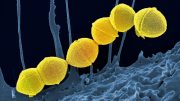
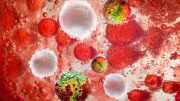
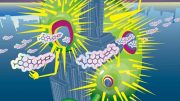
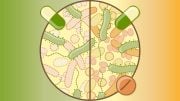
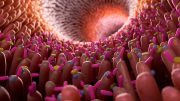

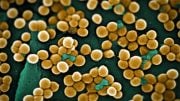

Be the first to comment on "New Form of Antimicrobial Resistance Discovered – One of the World’s Greatest Health Threats"